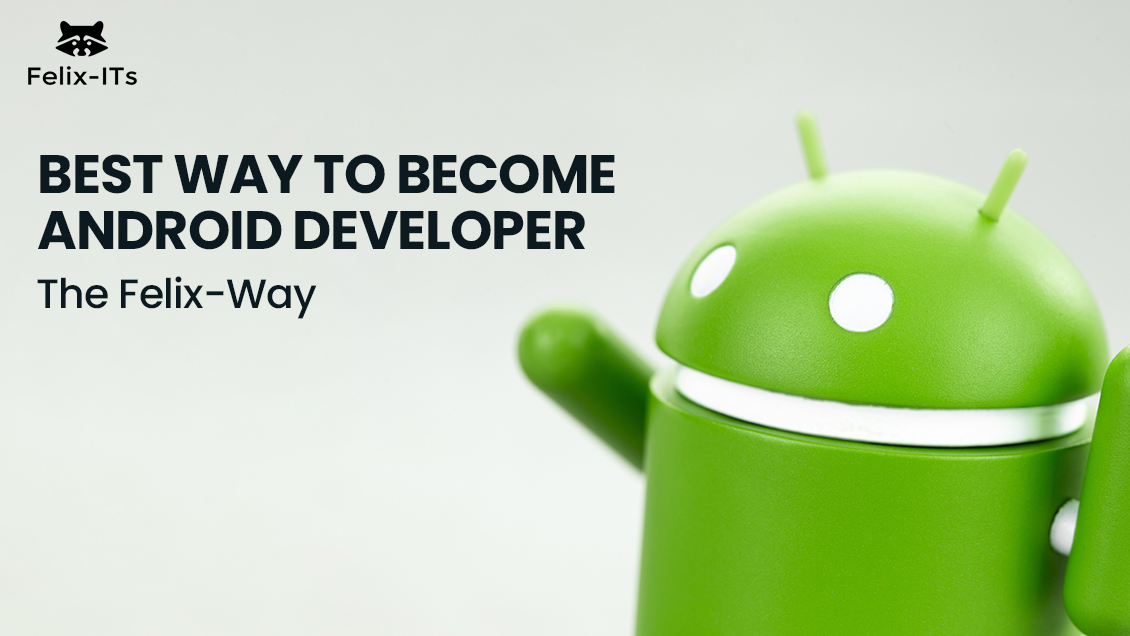Android is a Linux kernel-based operating system used in a wide range of mobile devices, watches, tablets, and TVs. It was initially developed by Android Inc but was bought by Google later in 2005. The platform is open source, is a widely used OS in the market that provides a huge market for apps.
Naturally, this has brought a huge rise in careers in Android development. If you’re also looking to be one, here’s how you can go about it –
Learn Technical Skills –
Programming languages
Java or Kotlin and XML are the two programming languages used in Android. Java or KOTLIN is needed for back-end functionalities like storing data, variables, and the working of buttons. Whereas, XML files are needed for front-end functionalities like layouts, designs, blueprints, etc. So, first, decide on which one would help you accomplish your purpose.
Though Kotlin is an alternative language to Java, it is simpler and is also the official secondary Java language. It would be recommended to learn Java first and then Kotlin to get the best of the results.
There are various learning resources available for you to master the languages. Felix-ITs also offers Android development courses and training in Pune & Mumbai, which will get you started on working on projects.
Android Software Development Kit (SDK) & Android Studio
Android Studio is the official Integrated Development Environment and is specifically designed for this operating system. It is available free-of-charge and offers several features like visual layout editor, APK analyzer, intelligent code editor, flexible build system, fast emulator, etc. It is important to understand the file structure which includes:
- xml file
- Java file
- Drawable file
- Layout file
- Mipmap file
- xml file
- xml file
- xml file
- Gradle (Module: app) file
Android SDK can also be downloaded free and includes handy coding tools, sample codes, and several software libraries. It helps a developer build and test Apps with ease. Gradle is a library that is one of the most important components.
Additional Read –
Android Components
Understand the 4 building blocks of an Android application, which are –
- Activities
This includes keeping track of whether each activity is carried out properly or not, handle changes, and understand the processes and tasks.
- Services
This component is responsible for the app to keep running in the background and perform timely operations.
- Broadcast receivers
This component enables the process of delivering broadcasts that are outside of the regular flow.
- Content providers
As the name goes, this component helps in assigning a URI and managing the app data stored in the file systems.
UI Design
Simple UI designs include a variety of layouts, elements, and intent. Frame, linear, constraint, and relative come under different layouts. TextView, EditText, ImageView, and buttons are the different elements. Intent can be implicit, explicit, or intent filter.
Complex UI designs include tabs, dialogs, material design, fragments, animations, ListView, RecycleView, etc. These aren’t compulsory for Android design but are used as a standard while developing.
Bonus Read on UI/UX – Level Up Your UI/UX Skills: AI-Focused Online Courses for Designers
Storage Systems
File System, Database (RoomDB), and shared preferences are the three types of storage systems used in Android. One will need these to handle large amounts of data on a device and to interact with data outside of the device.
A few other things you should know are –
- Debugging skills like logging, error handling, exceptions, and memory profiling
- Skills to find the cause and solutions to fix memory leaks
- Knowledge of third-party libraries can come in handy too
- Understanding of analytics, unit testing, security, and App release
Lastly, Android Jetpack is a whole in one package with varied tools, libraries, infrastructure code to make it quick & easy for a learner. Just remember to practice as much as you can and create a project that helps your users.
If you’re looking to make a career in this field, Felix-ITs offers android training in Pune. Enroll in one of our Android App development courses to leap.


